"Songs are sneaky things. They can skip across
borders. Proliferate in prisons. Penetrate hard
shells...I always believed that the right song at
the right moment could change history."
AUTHOR: Pete Seeger
cross all boundaries when other
means of communication fails."
COMPOSER
RHAPSODY IN BLUE
 |
| http://missrosen.wordpress.com/2010/05/17/rhapsody-in-blue/ |
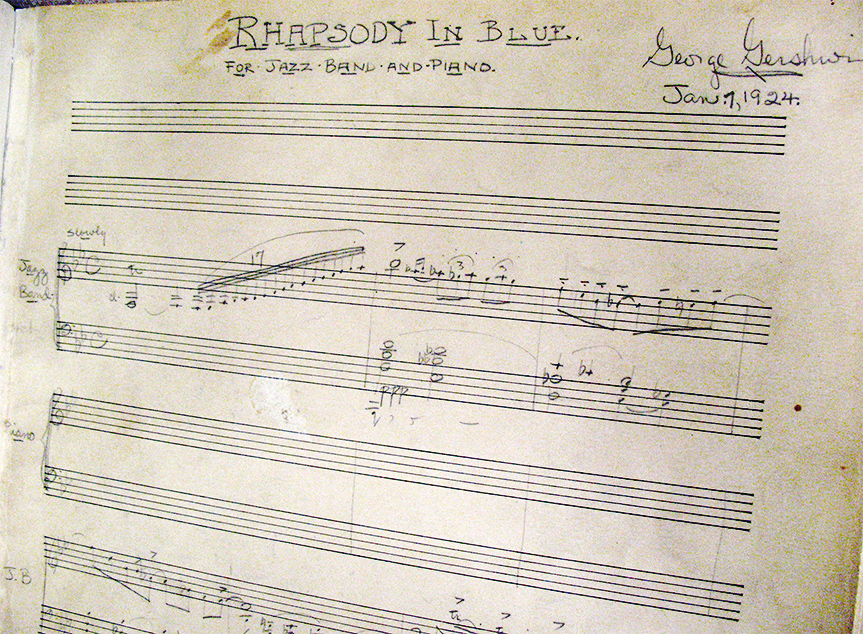 |
| http://fountain.unc.edu/spr_11/sleuthing.html |
(Original Jazz Band Version)

ARTICLE INFORMATION
MOSTLY FROM:
Rhapsody in Blue premiered
in an afternoon concert on
February 12, 1924,
held by Paul Whiteman
and his band Palais Orchestra,
 |
 http://www.centerforjazzarts.org/whiteman_exhibition2.html |
entitled
"An Experiment in Modern Music."
 |
| http://clarinut.net/rib_story.htm |
the historical development of jazz
 |
| http://www.network54.com/Forum/27140/message/1270229425/Murray+Anderson's+Sparkling+Film+is+the+title+.... |
KING OF JAZZ (1930)
Paul Whiteman
as a particularly American phenomenon and
the manner in which the jazz style might
be utilized in modern concert compositions.
The program included piano solos by
Zez Confrey
(notably his deathless Kitten on the Keys),
Zez Confrey
Piano Solo
Kitten On The Keys, 1921
arrangements for the full orchestra of such
pop tunes as Alexander's Ragtime Band
and Limehouse Blues,
examples of various jazz treatments of well-
known songs, a Suite of Serenades by
Victor Herbert,
and, as the center piece for the evening,
Gershwin's Rhapsody in Blue.
to which conductor Walter Damrosch
The concert took place at the
Aeolian Hall in New York City
AEOLIAN HALL
 |
| Heifitz (Violinist) |
 |
| Kreisler (Violinist) |
 |
| Stokowski (Conductor) |
 |
| Rachmaninoff (Composer) |
 |
| Stravinsky (Composer) |
The version that was heard then was for a
24-piece jazz band, not for full orchestra.
This was the original arrangement of
Gershwin's masterpiece.
RHAPSODY IN BLUE
Part 1
Ferde Grofe, Orchestrator
RHAPSODY IN BLUE
Part 2
Ferde Grofe, Orchestrator
Gershwin had agreed that Ferde Grofé,
Ferde Grofé Reminisces
About George Gershwin
About George Gershwin
Whiteman's pianist and chief arranger,
was the key figure in enabling the piece
to be successful, and critics have praised
the orchestral color. Grofé confirmed in
1938 that Gershwin did not have sufficient
After the premiere, Grofé took the score
and made new orchestrations in 1926
and 1942, each time for larger
orchestras. Up until 1976, when
orchestras. Up until 1976, when
recorded the original jazz band
version for the very first time, the
1942 version was the arrangement
"expressed what it was to be alive at that moment
as an American .... to let people know what it feels
like to stand right here on this street corner and
hear this elevated train go by and hear this building
being built and hear this wail from a jazz club."
of 24 musicians (plus violins) calls for the
following orchestra: woodwinds (5 players):
flute, oboe, clarinet in E-flat, clarinet in B-flat,
alto clarinet in E-flat, bass clarinet in B-flat,
 |
| Bass Clarinet |
heckelphone,
 |
| Heckelphone |
sopranino saxophone in E-Flat,
alto saxophone in E-flat, tenor saxophone in
B-flat, baritone saxophone in E-flat;
B-flat, baritone saxophone in E-flat;
brass: 2 horns, 2 trumpets,
2 flugelhorns,
2 flugelhorns,
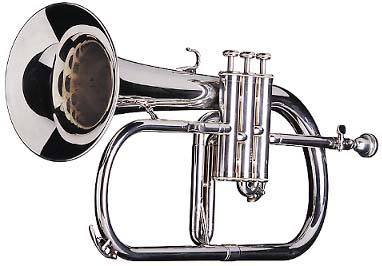 |
| Flugelhorn |
euphonium, 3 trombones, tuba; percussion:
drums, timpani, trap set; keyboards: 2 pianos,
Many musicians, especially the reeds,
played two or more instruments;
the reed "doublings" were especially
calculated to take advantage of the full panoply
of instruments available in that section of
Whiteman's band. Indeed, Grofé's familiarity with
the Whiteman band's strengths are a key factor
in the scoring. This original version, with its unique
instrumental requirements, had lain dormant until
its revival in reconstructions beginning in the
mid-1980's, owing to the popularity and
serviceability of the later scorings.
RHAPSODY IN BLUE
Debut Concert
New York, June 10, 1924
George Gershwin, Piano
Ross Gorman, Opening Clarinet Glissando
Paul Whiteman and his Concert Orchestra
The famous beginning of the Rhapsody
had originally been composed by Gershwin
as a trill with a rapidly ascending
17 note scale run.
"As a joke on Gershwin, [Ross] Gorman
(Whiteman's virtuoso clarinettist)
played the opening measure
with a noticeable glissando,
| Glissando Symbol |
adding what he considered a
humorous touch to the passage. Reacting
favorably to Gorman's whimsy, Gershwin asked
him to perform the opening measure that way at
the concert and to add as much of a 'wail' as possible."
 |
| The famous clarinet opening of Rhapsody in Blue. |

Another Version:
RHAPSODY IN BLUE
George Gershwin, Piano
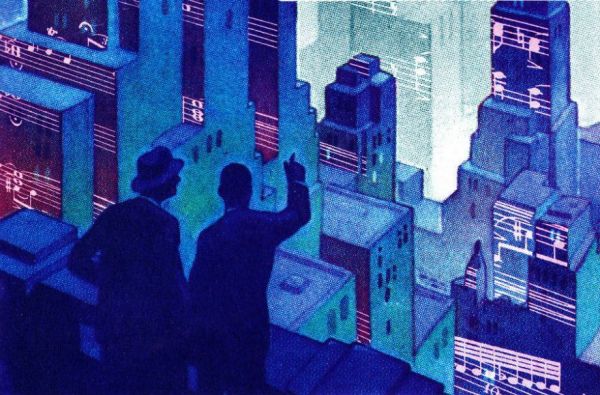 |
| http://www.neatorama.com/2013/12/13/George-Gershwins-Rhapsody-in-Blue/#!MieeL |
ARTICLE FROM:
The date was February 12, 1924. The
setting was New York's Aeolian Hall.
The program was Paul Whiteman's
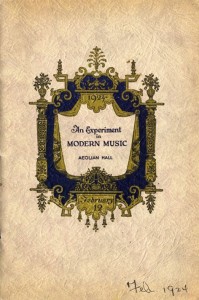
"An Experiment in Modern Music."
As the evening grew late, the crowd began to
As the evening grew late, the crowd began to
get restless. Suddenly the mood changed
dramatically as 25 year old George Gershwin
sat down at the piano to play his
Rhapsody in Blue. The piece was an
overnight sensation and helped to
introduce jazz into the concert hall.
 |
| http://vivrolfe.com/wp-content/uploads/2013/09/GeorgeG.jpg |
Gershwin's famous composition almost
never happened. Whiteman had invited
Gershwin to write a piece for his Aeolian Hall
program but the composer had been non
committal. The bandleader decided to help
things along by placing an item in the
New York Times on January 3 announcing
that Gershwin would be premiering a "jazz
concerto" for the February event. Panicked
into action and working quickly under
deadline, Gershwin began writing four
It was influenced by Liszt,

blues music, and the
sound of a train trip
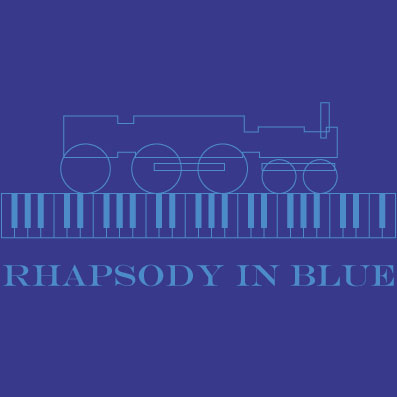
Gershwin took to Boston.
"Steely rhythms and rattlety-bang,"
he said,
"are often stimulating to a composer."
Within three weeks, he had completed
a two-piano version of the Rhapsody.

RHAPSODY IN BLUE
(For Two Pianos)
Hélène Mercier, Piano
Louis Lortie, Piano
The working title of the piece was American Rhapsody.
Ira Gershwin suggested the name Rhapsody in Blue
after visiting an exhibition of the art of
James McNeill Whistler,

blues music, and the
sound of a train trip

Gershwin took to Boston.
"Steely rhythms and rattlety-bang,"
he said,
"are often stimulating to a composer."
Within three weeks, he had completed
a two-piano version of the Rhapsody.

RHAPSODY IN BLUE
(For Two Pianos)
Hélène Mercier, Piano
Louis Lortie, Piano
Ira Gershwin suggested the name Rhapsody in Blue
after visiting an exhibition of the art of
James McNeill Whistler,
 |
| Whistler |
 |
| James Whistler: Symphony in White, No.3 |
 |
| James Whistler: Arrangement in Grey and Black (Portrait of the Artist's Mother) |
and, Nocturne in Black and Gold
(the inspiration for "Rhapsody in Blue")
for his artworks.
Ferde Grofé
did the orchestrations for
Whiteman's band.
(the inspiration for "Rhapsody in Blue")
 |
| James Whistler: Nocturne in Black and Gold (The Falling Rocket) |
Ferde Grofé
 |
| Grofe far left next to Gershwin,
Whiteman far right
|
Whiteman's band.
Gershwin himself was the soloist that evening at
the Aeolian Hall. He did this out of necessity
the Aeolian Hall. He did this out of necessity
because he had not completed the solo piano
part and had to improvise on the spot. Before
he could acknowledge the thunderous applause
that greeted his performance, he had to run
backstage to have his hands bandaged. He had
pounced so hard on the piano that there was
actually blood on the keys. Ironically, the
concerto was never recorded with Gershwin at
the piano. The composer called the piece a
"musical kaleidoscope of America --
our vast melting pot."
A high school dropout at age 15,
Gershwin achieved enormous success
as a songwriter by age 19 when
he wrote the music for the
song Swanee.
 |
| http://en.academic.ru/dic.nsf/enwiki/11404349 |
It became one of the first
phonograph records ever
made (recorded by Al Jolson)
phonograph records ever
made (recorded by Al Jolson)
SWANEE (1920)
Al Jolson, Vocal
and it sold over two million copies.
In 1931, the show Of Thee I Sing,
In 1931, the show Of Thee I Sing,
for which he wrote the music, became
the first musical to ever win the Pulitzer Prize.
Sadly, Gershwin died in 1937,
Sadly, Gershwin died in 1937,
shortly before his 39th birthday.
Rhapsody in Blue remains one
of the most frequently played
orchestral works written
by an American.

RHAPSODY IN BLUE
Philharmonic Wind Orchestra
With Famous New York City Footages
RHAPSODY IN BLUE
Part 1
Part 1
Leonard Bernstein: Conductor, Piano
New York Philharmonic, 1976

RHAPSODY IN BLUE
Part 2
Leonard Bernstein: Conductor, Piano
New York Philharmonic, 1976
Part 2
Leonard Bernstein: Conductor, Piano
New York Philharmonic, 1976
PAUL WHITEMAN TALKS ABOUT
GEORGE GERSHWIN AND
THE RHAPSODY IN BLUE

RHAPSODY IN BLUE
SOLO PIANO
LISTENING GUIDE
Overture (0:00)
"Railroad motive" (0:55)
First Song (Solo Piano/Orchestra) (1:46)
Second Song (Orchestra) (3:31)
Third Song (Orchestra/Solo Piano) (4:09)
Fourth Song (Solo Piano) (7:02)
Fifth Song (Strings/Orchestra /Piano) (8:35)
Agitato e misterioso (11:21)
Double Reprisal (Grandiose) (13:14)


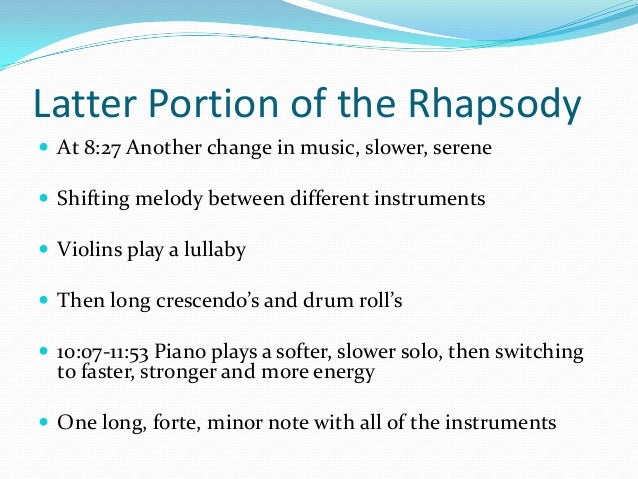
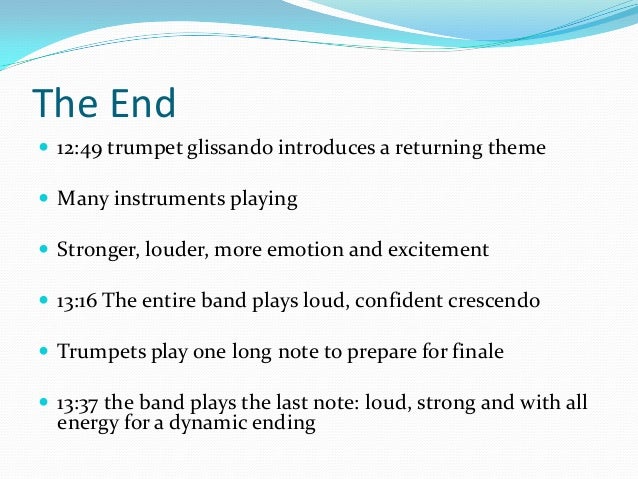

RHAPSODY IN BLUE
LESSON PLAN
Classics for Kids


RHAPSODY IN BLUE
ANALYSIS AND
LESSON PLAN
A CMP Plan for 5th and 6th Graders
Judy Meyer Hays






http://illinoiscmp.weebly.com/uploads/4/1/0/7/41075753/rhapsody_in_blue.pdf
| http://www.tapeta-new-miasto-rzeka-noc-jersey-wiatla.na-pulpit.com/ |
LINKS
https://www.kcsymphony.org/ResourceCtl?fileId=Dl8T5KM11opuPwoCfLZ0wA%3D%3D
http://www.stageandcinema.com/2012/12/06/laco-rhapsody-in-blue/
http://illinoiscmp.weebly.com/uploads/4/1/0/7/41075753/rhapsody_in_blue.pdf
http://illinoiscmp.weebly.com/uploads/4/1/0/7/41075753/rhapsody_in_blue.pdf

http://jewishcurrents.org/february-12-rhapsody-blue-24271
http://www.abbeville.com/jazz/055.asp
http://www.pianostreet.com/blog/articles/that-fascinating-dash-of-blue-7051/
http://www.redhotjazz.com/rhapsody.html
http://www.wsj.com/articles/SB10001424052702303496804579369113795461916
http://www.jamesarts.com/AZRHAPNOTE.htm
http://www.wsj.com/articles/SB10001424052702303496804579369113795461916
http://www.jamesarts.com/AZRHAPNOTE.htm

RHAPSODY IN BLUE
Semi-Biographical Film
About George Gershwin
Semi-Biographical Film
About George Gershwin
(Original Theatrical Trailer)
With Oscar Levant
 |
| http://classicshowbiz.blogspot.com/2012/08/an-interview-with-ben-starr-part-one.html |
RHAPSODY IN BLUE
(Complete)
Oscar Levant, Piano
Eugene Ormandy, Conductor
Philadelphia Orchestra, 1945
(1880-1946)
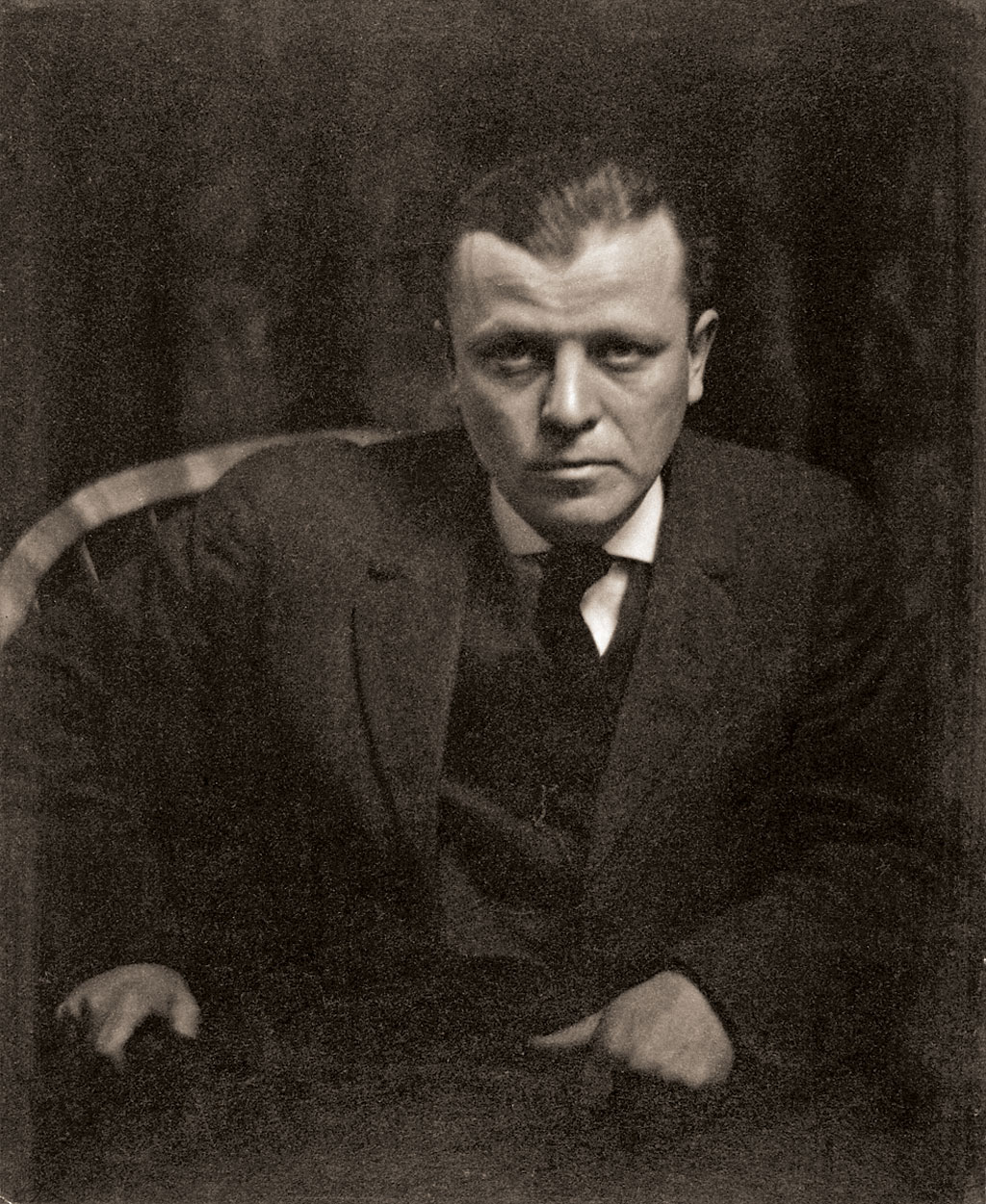
BASED ON GERSHWIN'S
RHAPSODY IN BLUE


RHAPSODY IN BLUE
Webumentary Series
With Marin Alsop, Music Director
Baltimore Symphony Orchestra








.jpg)


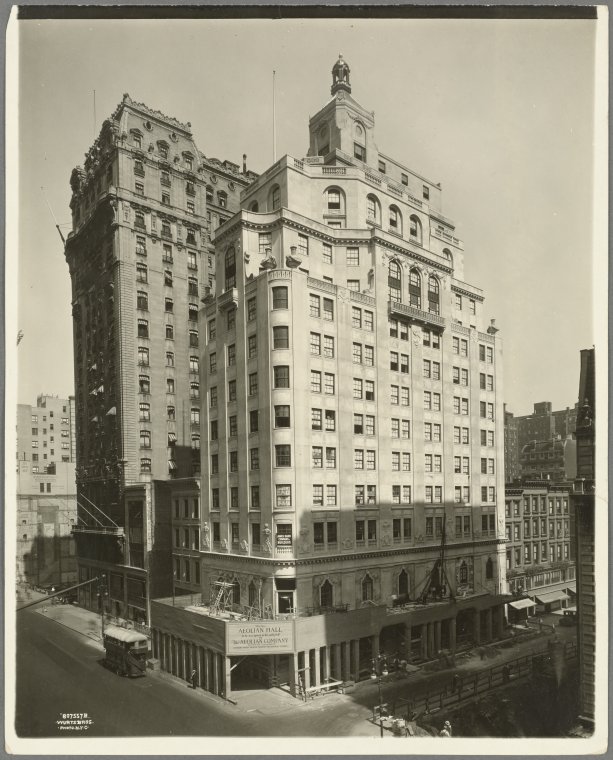





.jpg)
.jpg)
.jpg)
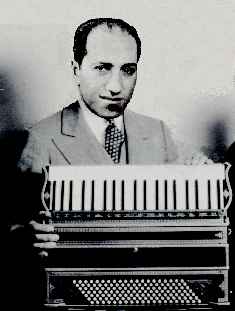
.jpg)
.jpg)
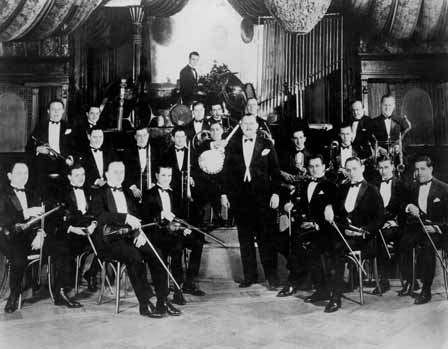




_08.jpg)



.jpg)








